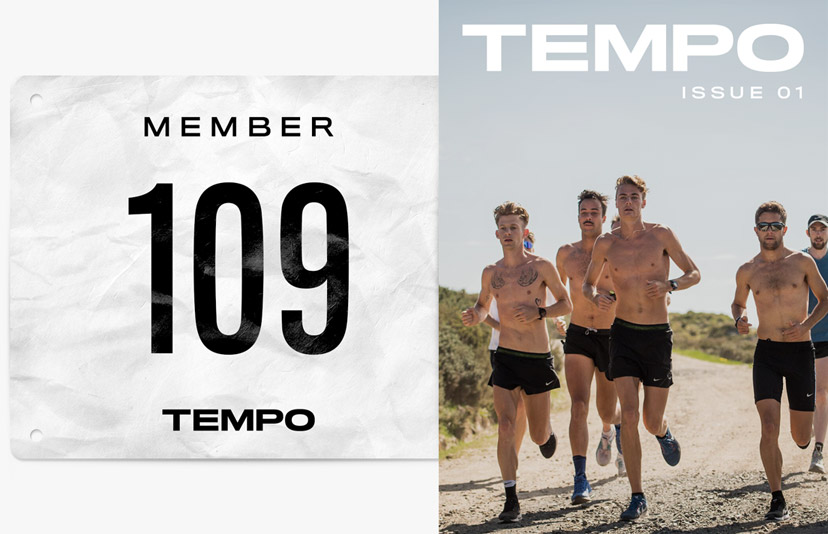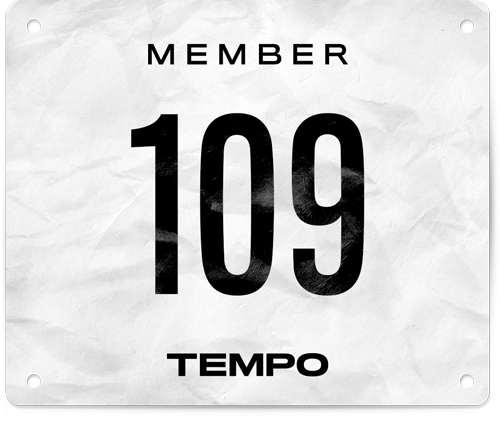Culture
Australia’s Major
An Interview with Sydney Marathon Race Director Wayne Larden
Editor's note: The file images published with this interview are from the 2018 and 2023 iterations of the Sydney Half Marathon (shot by Simon James and Chris Huang respectively), an event held in May each year and not connected to the Sydney Marathon. Tempo looks forward to bringing you photos of this year’s Sydney Marathon early next week. Stay tuned.
Wayne Larden, race director of the Sydney Marathon, has been at the helm of a transformative journey for one of Australia's premier running events. As the marathon approaches its final hurdle in its bid to become an Abbott World Marathon Major, Tempo sat down with Wayne to discuss the challenges, changes and vision behind this ambitious goal. With the event just days away, Wayne's insights offer a glimpse into the future of marathon running in Australia.
Tempo: Can you tell us a bit about yourself and your relationship with the Sydney Marathon?
Wayne: I have a very long relationship with the Sydney Marathon. In fact, I did the first operational assessment of the race in 1993 when Sydney won the Olympics. I was asked to come in and do an operational assessment of the marathon route with the view that they would do some test events and have a Sydney Marathon leading up to the Olympics. Which is, of course, how the event was established.
And I was a runner. I did a sports science degree in Canberra and had a running scholarship to the Australian Institute of Sport. I ran in four World Cross Country Championships, and my PB for the marathon was 2:16:04 in 1995 at Gold Coast. So I had an affiliation with Sydney Marathon from very early in the piece because I was excited about the Olympics. At the time, I was working for Fun Runner magazine as the editor.
“The World Marathon Majors group nutted out a vision for the series … to be truly global we need to have representation in more markets than the current three races in North America, two in Europe and only one in Asia.”
Wayne Larden
I even applied for the Sydney Marathon race director's role back then. I was only a young fellow, 24 years old at the time. I didn't get the job, which I'm thankful for now because it went bankrupt twice in the following years.
After that, I was involved with on-ground commentary for the event. After the 2000 Olympics, I set up my own brand marketing company and got asked to consult on the Sydney Marathon in 2004. And that was the start of our journey.
Can you tell us more about this journey towards becoming a World Marathon Major?
I started Pont3, the company that has the rights to deliver the Sydney Marathon, and have been organising the event since 2005. Back then, we only had about 12,000 participants across three events: the marathon, half marathon and 10K. Key government stakeholders and the event owner, Athletics Australia, gave us one year to turn it around or they'd consider withdrawing support and take the rights away. Our first major change was consolidating all the finishes at the Opera House and adding a family run.
Initially, we changed the name to the Sydney Running Festival because people were scared off by the word ‘marathon’. What we needed was to engage the non-running community in a running event. To make it fun and exciting and get them to enter into something that they'd never done before. Obviously, we had some great assets that helped with that, like running over the Sydney Harbour Bridge and finishing at the Opera House.
Over the next 10–15 years, we built our audience, always with the vision of Sydney Marathon somehow being a world major. It was only a few years later, when Infront (a subsidiary of Wanda Group, sponsor of the World Marathon Majors) took over managing the world majors candidate program that things changed.
“When we signed the deal in 2021, we were just coming out of Covid. We identified some significant barriers to us achieving the world majors criteria based on the current market in Australia. Our marathon market in Australia was significantly behind.”
Wayne Larden
The World Marathon Majors group nutted out a vision for the series. Which was, to be truly global we need to have representation in more markets than the current three races in North America, two in Europe and only one in Asia. If we want to represent the global running community, we should be considering races in other key geographic regions, like Oceania, Africa and other markets.
In 2022, we were added as the third candidate race for the World Marathon Majors, alongside Chengdu in China and Cape Town in South Africa. There'll be a maximum of nine races in the series, and they're looking for geographic diversity.
What were some of the challenges you’ve faced so far in pursuing this goal?
When we signed the deal in 2021, we were just coming out of Covid. We identified some significant barriers to us achieving the world majors criteria based on the current market in Australia. Our marathon market in Australia was significantly behind. There was a significantly higher focus on people running half marathons, and bucket list events being things like [the 14km Sydney race] City2Surf.
“We’ve expanded the footprint of the course, ensuring two lanes the whole way and reducing the number of out-and-backs. We removed all the pain points from last year's course.”
Wayne Larden
To put it in context, how many people run City2Surf?
Oh, there's 70 to 80,000 every year.
So when you put that in a global context, it's one of the most popular races in the world.
That's right. So, one of the things that we identified very early on was a need to position the marathon as the bucket list item that road runners and joggers aspire to. We felt that was going to be our most significant challenge, because one of the criteria is that we have to have a set number of finishers, and it was significantly more than any marathon we've ever had in Australia.
Can you tell us that number?
I'm not allowed to speak about specific criteria points, but let's just say we would have to triple our number of marathon finishers.
Boston's around 25,000, and Tokyo's around 35,000.
Yes, and the biggest, New York and London, have over 50,000 finishers. So for them to add an event to the world majors, it needs to be authentic. And part of that is having a large field of runners and a first-rate finishers’ experience on the course, as well as a whole bunch of other things.
“The new start is very exciting. It's historic. It’s poetic. It brings us full circle to the original purpose of the Sydney Marathon, which was to be a legacy event of the Sydney Olympics.”
Wayne Larden
So, given those challenges, how have you approached changing the culture of running in Australia?
We’ve focused on building a community, repositioning the marathon as the pinnacle, the ultimate test of individual performance in road running. We created a nurturing, safe community with run clubs where people who don't believe they're marathon runners can go and not feel threatened.
We're spending a lot of money on engaging with and building run clubs and bringing them together to create a Sydney Marathon community. We've partnered with groups like Marathon State of Mind to provide mental skills training. We're also using social media and genuine running community influencers to reach our target audience.
What changes have you made to the event itself to meet World Marathon Major standards?
We added another hour to the cutoff time, making it a seven-hour cutoff now. Previously, because Sydney's not a flat course, we were in a position with a six-hour cutoff where five-hour runners were going, ‘I don't know – if I have a bad day, I might get cut off.’ So the seven-hour cutoff pretty well captures everyone. So that was a big thing.
And for 2024 we’ve returned to the original start line on Miller Street, just outside North Sydney Oval. The new start is very exciting. It's historic. It’s poetic. It brings us full circle to the original purpose of the Sydney Marathon, which was to be a legacy event of the Sydney Olympics.
This gives us more space and better access, with three train stations bringing runners to the start area instead of just one platform as we did at Milsons Point Station. Each of the new stations can bring 25,000 people an hour into the precinct.
“We also removed the half marathon from the program to provide … a much better experience for the marathon runners … It was a significant sacrifice in terms of revenue, dropping 13,000 entries, but it ensures that the marathon is the focus.”
Wayne Larden
So you'll have a lot more space. Because when you go to majors like New York, Boston or London, there's space, there's a precinct.
Yes, there's a precinct. So, point number one of the off-criteria feedback, which I can talk about, was you need to move the start for more space and you need to move the start for better access.
Another was, while the course is beautiful, the footprint we had was too narrow, and it meant we had to have too many out-and-backs to get distance. To address that, we’ve expanded the footprint of the course, ensuring two lanes the whole way and reducing the number of out-and-backs. We removed all the pain points from last year's course. For example, we now go five kilometres further down Anzac Parade to get rid of the eight kilometres in Centennial Park.
We also removed the half marathon from the program to provide more space and a much better experience for the marathon runners, with a longer start window. It was a significant sacrifice in terms of revenue, dropping 13,000 entries, but it ensures that the marathon is the focus. We’ve made sure the marathoners have a clear run, and there's no crossover with tail runners from the half marathon. For us to try and deliver a half and sneak it in before the marathon, the risk of operational issues on the course was too high – and we had problems last year trying to do it.
Removing the half marathon means we can move the marathon to the first start of the day: 6am. That will reduce impacts from heat and give runners free rein of the course.
We'll still have a 10K and we'll still have a family run because I want to nurture the communities and give them a stepping stone. These races will start after the marathon. They'll be on a completely separate footprint and they'll finish at the Conservatorium. The only race that will finish at the Opera House is the marathon, but all of the events still go over the Harbour Bridge.
“Looking ahead to 2025, when we hope to be a full World Marathon Major, we are planning for 35,000 starters and I believe demand will exceed this by a significant margin as a first year major.”
Wayne Larden
What do you still need to achieve?
The next biggest thing we need to focus on is experience. We've got a city that the world majors audiences will want to see. We've got amazing, world renowned tourist icons and a course that will be one of the most spectacular out of all of them. We've got the most spectacular finish out of all of them, I believe. London would be comparable with the palace, of course. But you're looking at the Harbour Bridge, at the Opera House, when you come in to finish in Sydney. So, we've got that. We've got a course now that will be a majors course.
The next thing is, how do we bring the community out? How do we get Sydneysiders and people on the course who aren't running in the marathon? From our data, we know that marathon runners bring three people out who aren't running. So if we've got 40,000 in the marathon, that's 120,000 just as supporters. The charity runners bring in a similar number of people. So the charity program is important for us to bring people out on the streets.
How do you plan to engage the wider community in the event?
We need Sydneysiders and people on the course who aren't running in the marathon. We had 130,000 on the course last year. This year, I want to see a quarter of a million people out on the course.
We need the general community to get behind the Sydney Marathon. And that's the next stage, so the whole city is there. Which will then reduce the impacts on the non-running community. So people just know, ‘It's Sydney marathon day – I'm not driving today. Let's just walk down and cheer on these runners and become part of this community who support the Sydney marathon.’ And that's going to require another level of investment in entertainment, PR and promotion, and getting coffee shops, bars, and restaurants on the course to get behind it.
As the profile of the event grows, we expect to see an increase from 40,000 bed nights to 200,000 bed nights when international and interstate participation increases further. This will have a significant impact on the local hospitality and retail industries.The whole business community of Sydney is going to see the value in this and get behind it.
Sydneysiders themselves will feel the hype and will want to be a part of it. This is the next stage of development, which we're investing in now.
You have a sold-out field of 25,000 runners for Sunday’s race. What are your projections for the future?
Looking ahead to 2025, when we hope to be a full World Marathon Major, we are planning for 35,000 starters and I believe demand will exceed this by a significant margin as a first year major. There will be a lot of the world majors community who will want to tick off Sydney as soon as possible, before it becomes too difficult to get in.
What impact do you think this will have on running in Australia more broadly?
I want the running community in Australia to feel and embrace the Sydney Marathon as Australia's Abbott World Marathon Major. This is great for all of Australia and for running in Australia. It'll inspire people to run who wouldn't have, all around Australia. The benefits will be felt in all of the races around Australia.
It's going to change the landscape of running in Australia forever. Not only that, but the money we raise for charities, the tourism aspect, the community health and wellbeing aspect, the benefits to other running events around the country, and what we can invest back into the sport, will be significant. It's important to remember that Athletics Australia owns this event, so significant profits go back into the community.
…
As the Sydney Marathon stands on the brink of joining the elite ranks of the Abbott World Marathon Majors, Wayne’s vision extends far beyond the streets of Sydney. His ambitious plans aim not just to elevate one race, but to transform the entire running culture of Australia. With increased community engagement, international recognition and a commitment to reinvesting in the sport, the Sydney Marathon is poised to usher in a new era for long-distance running Down Under. As runners from around the world lace up for this weekend's event, they're not just participating in a race – they're becoming part of a movement that could reshape the future of marathon running in Australia and beyond.


